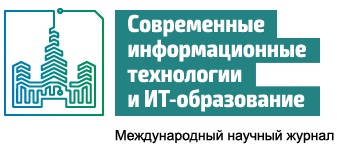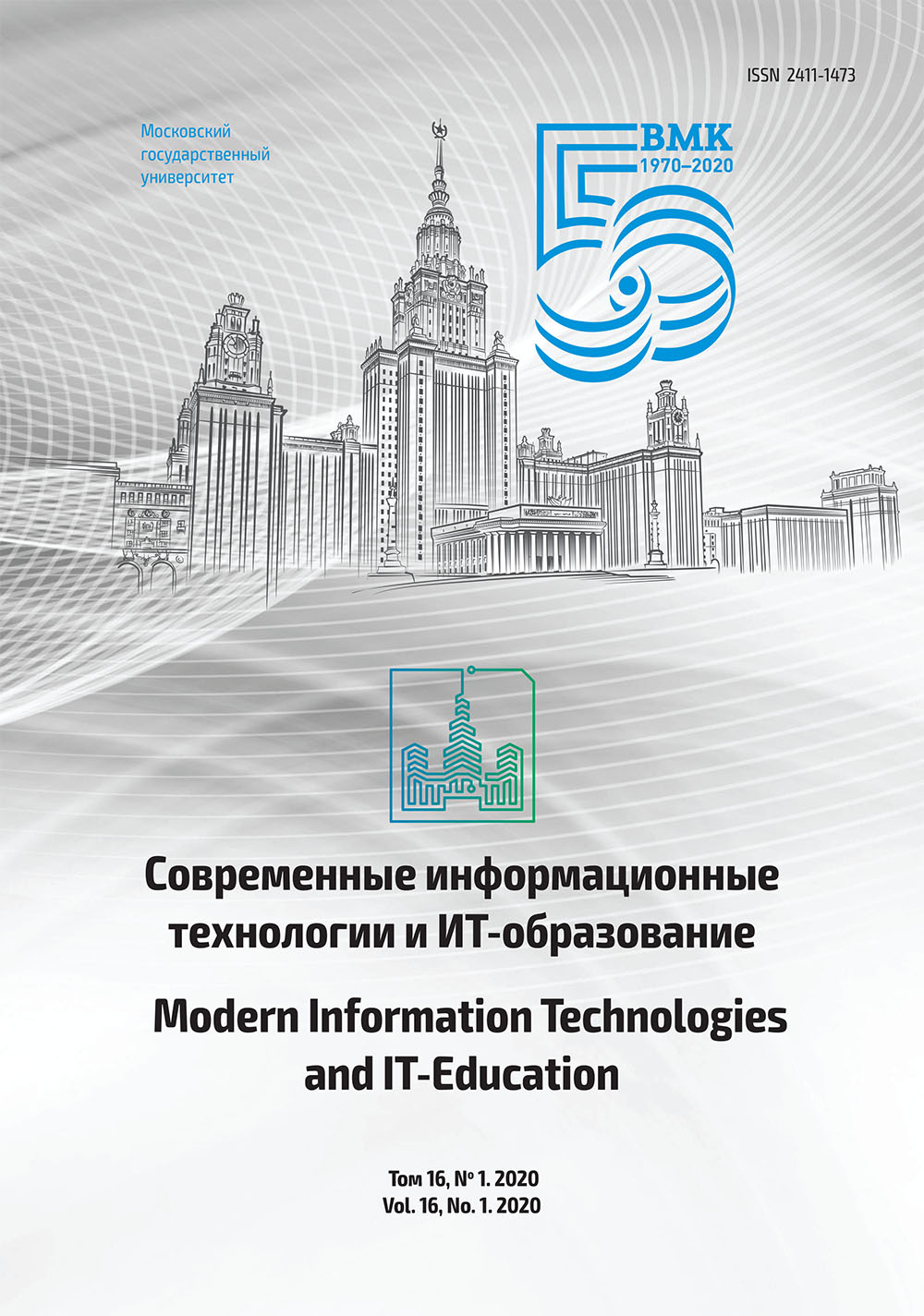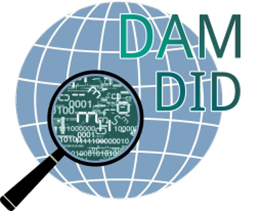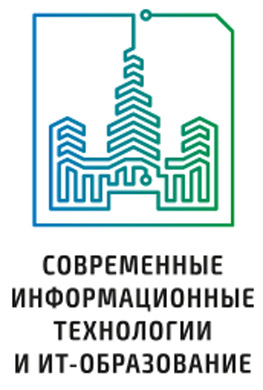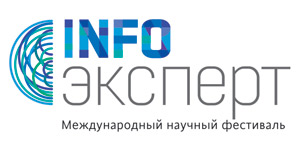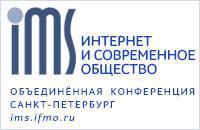Аспекты использования технологий прототипирования и искусственного интеллекта в рамках цифровой трансформации образовательного процесса
Аннотация
Рассмотрены вопросы применения аддитивных технологий и искусственного интеллекта в образовательном и исследовательском процессах учебных заведений. Охарактеризованы особенности аддитивных технологий, используемых для прототипирования 3D-объектов. Представлены результаты и описаны перспективы использования аддитивных технологий в образовательном процессе, связанном с преподаванием дисциплин математического профиля. Предложены варианты использования аддитивных технологий при решении задач моделирования систем с интеллектуальными и когнитивными компонентами. Изучены возможности создания автоматизированных интеллектуальных систем обучения на основе искусственного интеллекта. Проанализированы возможности аддитивных технологий как инструмента повышения эффективности обучения математике в рамках цифровой трансформации образовательного процесса. Аддитивные технологии в процессе обучения математике рассмотрены как звено структуры гибридной интеллектуальной обучающей среды в триаде "педагог – компьютер – обучающийся".
Литература
[2] Sleptsov A.F., Sleptsova M.V. Intelligent Educational Environment: Theoretical Approaches and Possible Implementation. Russian Journal of Education and Psychology. 2016; (5):70-88. Available at: https://www.elibrary.ru/item.asp?id=26718684 (accessed 18.2.2020). (In Russ., abstract in Eng.).
[3] Bulin-Sokolova E.I., Obukhov A.S., Semenov A.L. Emerging Teacher Education. Direction of Changes and First Practical Steps. Psychological Science and Education. 2014; 19(3):207-225. Available at: https://www.elibrary.ru/item.asp?id=22413097 (accessed 18.2.2020). (In Russ., abstract in Eng.).
[4] Knyazeva H. The synergetic principles of nonlinear thinking. The Journal of New Paradigm Research. 1999; 54(2):163-181. (In Eng.) DOI: https://doi.org/10.1080/02604027.1999.9972753
[5] Shaikhutdinov T.F., Gilmanova A.M. 3D-Printers in the Modern World and Education. In: Proceedings of the 42nd International scientific and technical conference of young scientists, graduate students and students, vol.1. Ufa, Ufa State Technical University; 2015. p. 323-334. Available at: https://www.elibrary.ru/item.asp?id=24894096 (accessed 18.2.2020). (In Russ.).
[6] Okladnikova T.V., Litvintseva E.A., Okladnikov A.P., Nevedimova L.V. 3D-printing in education. In: Proceedings of the International scientific-practical conference "Science and Education in the XXI Century". Tambov; 2014. p. 108-109. Available at: https://www.elibrary.ru/item.asp?id=22495611 (accessed 18.2.2020). (In Russ.).
[7] Leybov A.M., Kamenev R.V., Osokina O.M. Application of 3D Technologies Prototyping in Educational Process. Modern problems of science and education. 2014; (5):93. Available at: https://elibrary.ru/item.asp?id=22566422& (accessed 18.2.2020). (In Russ., abstract in Eng.).
[8] Eisenberg M. 3D printing for children: What to build next? International Journal of Child-Computer Interaction. 2013; 1(1):7-13. (In Eng.). DOI: https://doi.org/10.1016/j.ijcci.2012.8.4
[9] Bershadskiy M.E. The use of additive technologies in the educational process of the primary school. Innovative projects and programs in education. 2016; 5:12-21. Available at: https://elibrary.ru/item.asp?id=26903288 (accessed 18.2.2020). (In Russ., abstract in Eng.).
[10] Lipnitski L.A., Pilgun T.V. Additive Technologies aAnd their Perspectives in Education. System analysis and applied information science. 2018; (3):76-82. (In Russ., abstract in Eng.) DOI: https://doi.org/10.21122/2309-4923-2018-3-76-82
[11] Zasedatel V.S. Educational Potential of Rapid Prototyping Technologies. Naukovedenie. 2015; 7(5):193. (In Russ., abstract in Eng.) DOI: http://dx.doi.org/10.15862/220PVN515
[12] Abrosimov S.N., Tikhonov-Bugrov D.E. 3D Printing as a Component of Geometric and Graphical Disciplines Training Course. In: Proceedings of the VII International Internet Conference "Quality of graphic preparation", vol.1. Perm; 2017. p. 169-175. Available at: https://elibrary.ru/item.asp?id=29959903 (accessed 18.2.2020). (In Russ., abstract in Eng.).
[13] Kushnir A.P., Livshits V.B. Classification of 3D printing technologies. Dizayn. Teoriya i praktika = Design. Theory and practice. 2014; (18):74-84. Available at: https://elibrary.ru/item.asp?id=22857288 (accessed 18.2.2020). (In Russ.).
[14] Igonina E.V., Druzhinina O.V. Particular Qualities of the Development and Application of FDM-technology for Creating and Prototyping 3D-objects. Sovremennye informacionnye tehnologii i IT-obrazovanie = Modern Information Technologies and IT-Education. 2017; 13(2):185-193. (In Russ., abstract in Eng.) DOI: https://doi.org/10.25559/SITITO.2017.2.224
[15] Smirnov O.I., Skorodumov S.V. Modeling the technology of layer-by-layer synthesis in the development of products of complex shape. Modern high technology. 2010; (4):83-87. Available at: https://elibrary.ru/item.asp?id=13919878 (accessed 18.2.2020). (In Russ.).
[16] Tanaka K., Wang H.O. Fuzzy Control Systems Design and Analysis: A Linear Matrix Inequality Approach. New York, Wiley; 2001. (In Eng.).
[17] Takagi T., Sugeno M. Fuzzy identification of systems and its applications to modeling and control. IEEE Transactions on Systems, Man, and Cybernetics. 1985; SMC-15(1):116-132. (In Eng.) DOI: https://doi.org/10.1109/TSMC.1985.6313399
[18] Druzhinina O.V, Masina O.N. Methods of stability analysis of dynamic systems of intelligent control. Moscow, LENAND; 2016. (In Russ.).
[19] Druzhinina O.V, Masina O.N. Оn Approaches to the Stability Analysis of Nonlinear Dynamic Systems with Logical Controllers. Sovremennye informacionnye tehnologii i IT-obrazovanie = Modern Information Technologies and IT-Education. 2017; 13(2):40-49. (In Russ., abstract in Eng.) DOI: https://doi.org/10.25559/SITITO.2017.2.234
[20] Silantyeva A.V., Tolpinskaya N.B., Oreshkina O.A., Nezemsky V.I. Cognitive technologies in computer science: schoolbook. Moscow, MSTU N.E. Bauman Publ.; 2014. (In Russ.).
[21] Mikhalev A.I., Novikova E.Yu. Fuzzy-cognitive approach to the task of controlling FESI smelting processes. Adaptive systems of automatic control. 2006; (9):133-139. Available at: https://ela.kpi.ua/bitstream/123456789/9927/1/16.pdf (accessed 18.2.2020). (In Russ.).
[22] Igonina E.V. Application of the cognitive approach to the study of systems with incomplete information. In: Proceedings of the V International Scientific Conference "Actual Problems of Mathematics and Computer Science: Theory, Methodology, Practice", dedicated to the 150th birthday of academician S. A. Chaplygin. Yelets, Bunin Yelets University; 2019. p. 20-21. Available at: https://elibrary.ru/item.asp?id=41122395 (accessed 18.2.2020). (In Russ.).
[23] Alexandrova V.V., Zaytseva A.A. 3D Technologies and Cognition Programming. Informatsionno-izmeritelnye i upravlyayushchie sistemy = Information-measuring and Control Systems. 2012; 10(5):61-64. Available at: https://elibrary.ru/item.asp?id=17830418 (accessed 18.2.2020). (In Russ., abstract in Eng.).
[24] Alexandrov V.V., Sarychev V.A. Digital Programmed Technologies. Informatsionno-izmeritelnye i upravlyayushchie sistemy = Information-measuring and Control Systems. 2010; 8(11):3-9. Available at: https://elibrary.ru/item.asp?id=16527112 (accessed 18.2.2020). (In Russ., abstract in Eng.).
[25] Vasiliev S.N. To intelligent control. In: S. N. Vasiliev (ed.) Nonlinear control theory and its applications. Moscow, Fizmatlit; 2000. p. 57-127. (In Russ.).
[26] McCalloch W.S., Pitts W. A Logical Calculus of the Ideas Immanent in Nervous Activity. Bulletin of Mathematical Biophysics. 1943; 5:115-133. (In Eng.).
[27] Golovko V.A. Neural networks. Training, organization and application. Book 4. Moscow, IPRZhR; 2001. (In Russ.).
[28] Kruglov V.V, Dli M.I., Golunov R.Yu. Fuzzy logic and artificial neural networks. Moscow, FIZMATLIT Publ; 2001. (In Russ.).
[29] Babrashin E.A. Introduction to sustainability theory. Moscow, URSS; 2014. (In Russ.).
[30] Vorotnikov V.I., Rumyantsev V.V. Fundamentals of the theory of partial stability and control. Nizhny Tagil, NTI (branch) of SFedU; 2014. (In Russ.).
[31] Shestakov A.A. Generalized direct Lyapunov method for systems with distributed parameters. Moscow, URSS; 2007. (In Russ.).
[32] Masina O.N., Druzhinina O.V. Modeling and stability analysis of some classes of control systems. Moscow, URSS; 2011. (In Russ.).
[33] Goryushkin E.I. The use of neural network technologies in adaptive testing in computer science at a university: diss. . Ph.D. (Pedagogy). Kursk; 2009. (In Russ.).
[34] Grushevsky S.P., Arkhipova A.I. Design of educational information complexes. Krasnodar, KubSU Publ.; 2000. (In Russ.).
[35] Dobrovolskaya N.Yu. Computer neural network technologies as a means of individualized training for students of physical and mathematical specialties: diss. . Ph.D. (Pedagogy). Krasnodar; 2009. (In Russ.).
[36] Tuktarova L.R. System modeling of intellectual management of the organization of the educational process: On the example of an educational institution of secondary vocational education: diss. . Ph.D. (Engineering). Ufa; 2001. (In Russ.).
[37] Druzhinina O.V., Masina O.N., Petrov A.A. The Synthesis of the Switching Systems Optimal Parameters Search Algorithms. In: Y. Evtushenko, M. Jaćimović, M. Khachay, Y. Kochetov, V. Malkova, M. Posypkin (ed.) Optimization and Applications. OPTIMA 2018. Communications in Computer and Information Science, vol.974. Springer, Cham; 2019. p. 306-320. (In Eng.) DOI: https://doi.org/10.1007/978-3-030-10934-9_22

Это произведение доступно по лицензии Creative Commons «Attribution» («Атрибуция») 4.0 Всемирная.
Редакционная политика журнала основывается на традиционных этических принципах российской научной периодики и строится с учетом этических норм работы редакторов и издателей, закрепленных в Кодексе поведения и руководящих принципах наилучшей практики для редактора журнала (Code of Conduct and Best Practice Guidelines for Journal Editors) и Кодексе поведения для издателя журнала (Code of Conduct for Journal Publishers), разработанных Комитетом по публикационной этике - Committee on Publication Ethics (COPE). В процессе издательской деятельности редколлегия журнала руководствуется международными правилами охраны авторского права, нормами действующего законодательства РФ, международными издательскими стандартами и обязательной ссылке на первоисточник.
Журнал позволяет авторам сохранять авторское право без ограничений. Журнал позволяет авторам сохранить права на публикацию без ограничений.
Издательская политика в области авторского права и архивирования определяются «зеленым цветом» в базе данных SHERPA/RoMEO.
Все статьи распространяются на условиях лицензии Creative Commons «Attribution» («Атрибуция») 4.0 Всемирная, которая позволяет другим использовать, распространять, дополнять эту работу с обязательной ссылкой на оригинальную работу и публикацию в этом журналe.
